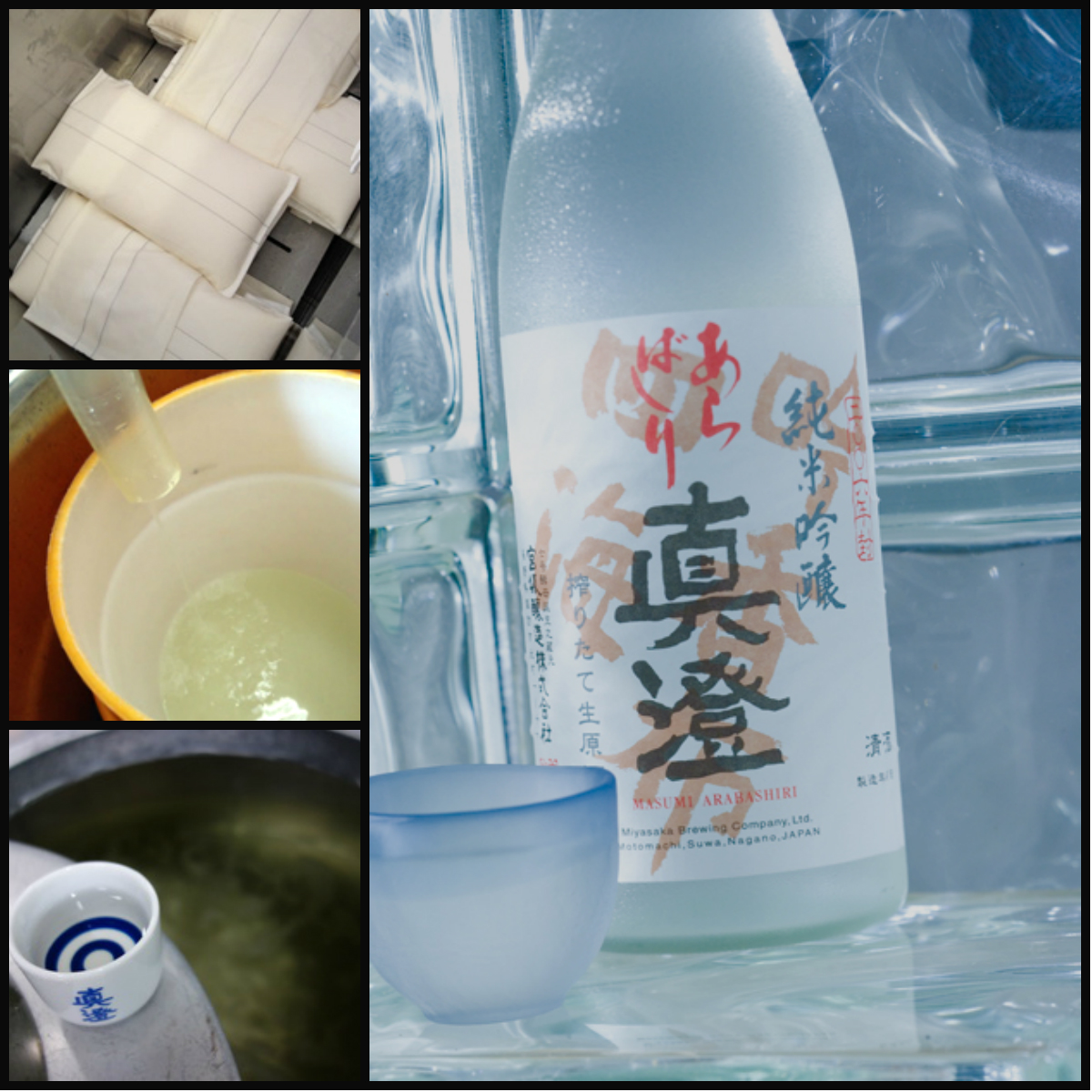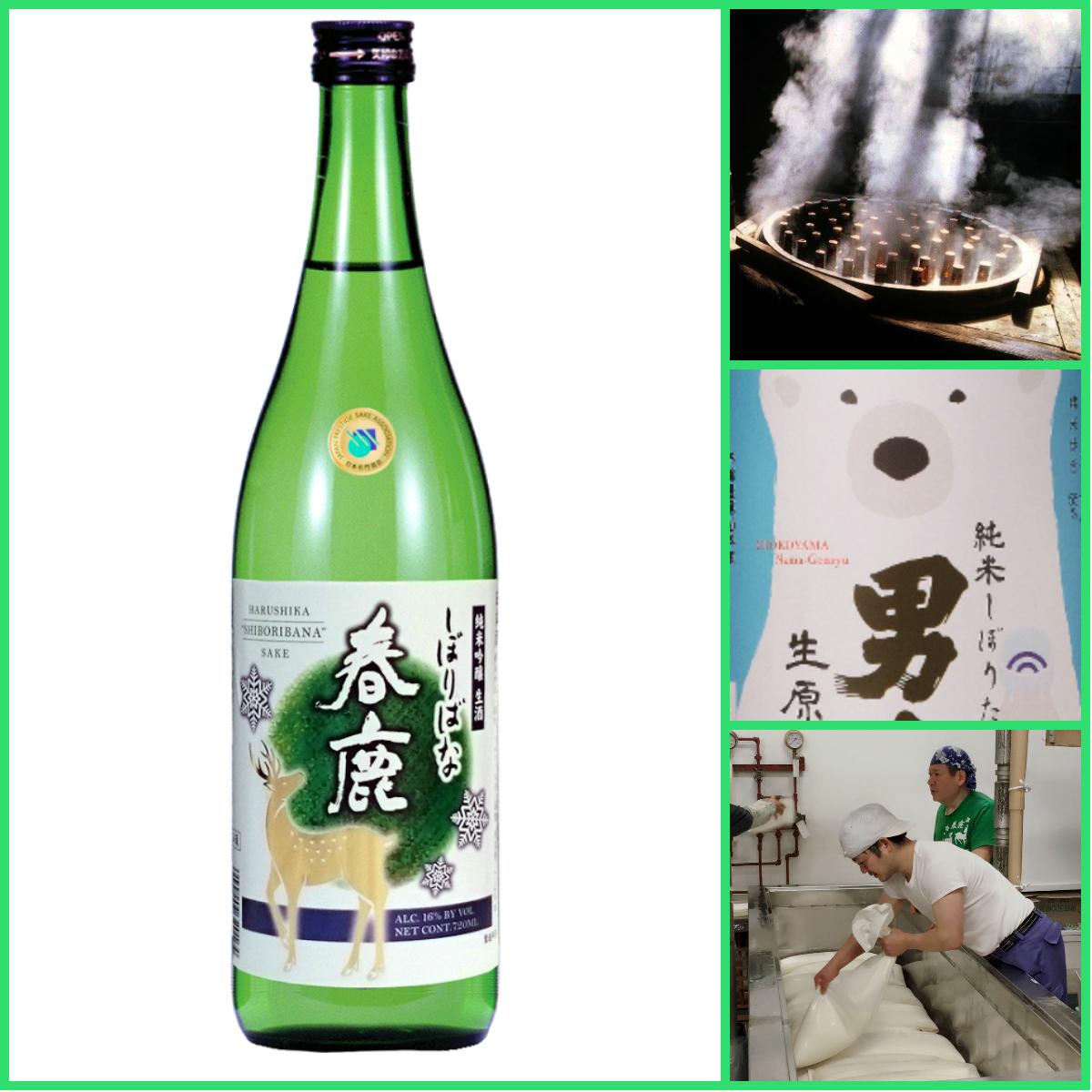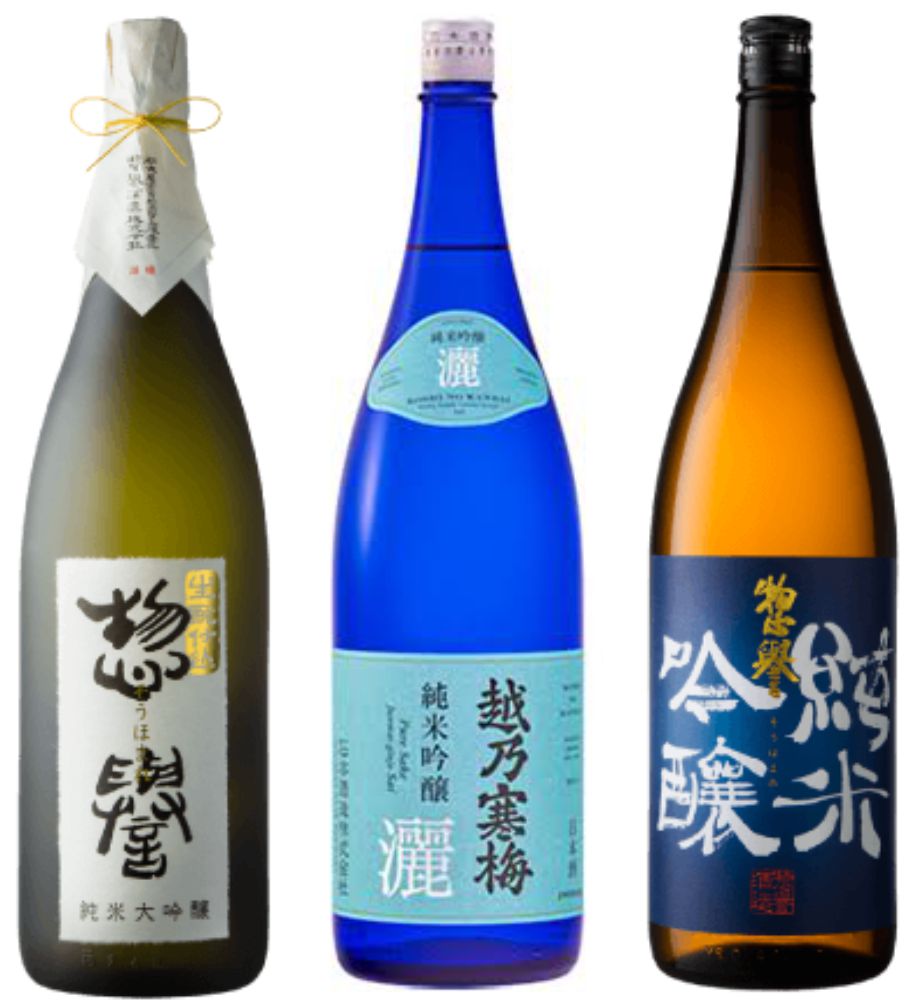
ARABASHIRI SAKE TASTING
Wow, how time flies! March snuck up on us when we weren’t looking, and suddenly we’re smack dab in the middle of Spring. Which is not such a bad thing since Spring is when Masumi releases it annual batch of Arabashiri sake. So of course we’re going to schedule a sake tasting to sample the Arabashiri, and for good measure we’re throwing in seven additional sake to taste for a total of EIGHT different sake! Ah Spring, when the smell of sake is in the air …
Yoshi from World Sake Imports will be here this Saturday to pour all EIGHT sake and answer any questions you may have. It’s a five hour tasting from 2pm to 7pm, plenty of time to stop by for a sample and some interesting sake conversation.
Along with the Arabashiri, we’ll be sampling a few other sake of special note. Many of you are already familiar with Dewazakura Oka or Cherry Bouquet, but not many of you may have heard of it’s BIG BROTHER, Dewazakura Oka Yamadanishiki! This special Oka is made using Yamadanishiki, the King of sake rice!
Also to the surprise of many (including ourselves), we are welcoming back Red Maple sake from Kamoizumi. Original discontinued after it’s first and only batch was released, the brewery has since decided to begin brewing this wonderful 2-year cold aged namazake once again.
Newly released Arabashiri, high end Dewazakura Oka Yamadanishiki, “brought back from the dead” Red Maple and FIVE other incredible sake. What other reason do you need to stop by this shop this Saturday for what is sure to be one of the best sake tastings of the year!
ARABASHIRI
COMPLIMENTARY SAKE TASTING & SALE
Saturday, March 16, 2013
2:00pm to 7:00pm
Here is the lineup for this Saturday.

MASUMI ARABASHIRI
“First Run”
Junmai Ginjo
It’s that time of the year again, when the BRAND NEW batch of Masumi Arabashiri is finally released for sale! In fact, this entire tasting was planned around the release of this special sake. This Spring release namazake beings with a lovely fragrant aroma, then a vivid clean taste followed with a robust finish. Young and feisty like many namazake, but with surprising finesse, this connoisseur’s delight from Masumi is not to be missed.

DEWAZAKURA OKA YAMADANISHIKI
“Cherry Bouquet (Select Rice)”
Ginjo
Dewazakura Oka is already a favorite of many of you here in Hawaii. Well if you thought the regular Dewazakura Oka was amazing, wait until you try it’s Big Brother, Dewazakura Oka Yamadanishiki! Soft, supple and fragrant, like a Summer breeze wafting above the pear blossoms, you won’t want to miss this premium version of the classic Oka!

DEWAZAKURA OKA
“Cherry Bouquet”
Ginjo
Credited as being the sake that started the “Ginjo” sake boom, this well known sake has a soft feeling on the tongue. Oka’s transparency of flavor also matches the clarity of this colorless liquor. It is floral rather than fruity, though there is a touch of pear and perhaps melon.

KAMOIZUMI NAMAGENSHU
“Red Maple”
2-Year Cold Aged Ginjo
The phantom sake that was originally discontinued after it’s first and only batch was released. A 2-year cold aged unpasteurized and undiluted sake that quickly became a favorite amongst many of you a few years ago. Well, to our surprise and delight, Red Maple is back, and we’ll be sampling a new batch of it this Saturday.

AKITABARE SHUNSETSU
“Spring Snow”
Ginjo Namazake
This namazake from Akitabare is seamlessly put together. In contrast to most unpasteurized sake which are bold and powerful in flavor, this sake drinks very light and is just sweet enough for sipping chilled on a warm sunny day. An elegant sake with rarefied flavor notes and a pleasantly dry finish.

AKITABARE KOSHIKI JUNZUKURI
“Northern Skies”
Junmai
Akitabare is the kind of sake one can drink enjoyably for hours at a stretch. Its subdued, understated refinement evokes a sense of the Northern province (Akita) where it is meticulously brewed. We’ll be tasting this as a contrast to another tasty Akitabare sake, Shunsetsu.

MIYASAKA YAMHAI 50 NAMA
“Last Ride Home”
Ginjo
This edgy, relatively new label combines the vivid characteristic of namazake (unpasteurized sake) with that unique marriage of acidity and depth achievable only through the old school Yamahai brewing method. Great by itself, it is even better paired with meats and other savory dishes.

KAMOIZUMI NIGORI
“Summer Snow”
Nigori Ginjo
This premium unfiltered sake is rich, creamy and brimming with exuberant natural flavor. Mildly sweet, yet surprisingly robust, it is an excellent introduction to the world of sake enjoyment. It’s the top selling nigori at the shop, so you won’t want to miss the opportunity to sample this one.
So please join us this Saturday to sample the newly released Masumi Arabashiri along with some great other sake at the shop.
Kanpai,
Malcolm & Nadine Leong
The Sake Shop
ARABASHIRI
COMPLIMENTARY SAKE TASTING & SALE
Saturday, March 16, 2013
2:00 pm to 7:00 pm

What is Arabashiri?
Although we’ll be sampling eight different sake this Saturday, the tasting is really being built around one specific sake, Masumi Arabashiri. This is a seasonal sake that has just been released for Spring 2013.
It’s name, “Arabashiri”, means “First Run” and has to do with the part of the brewing process when the sake is first pressed.
During the sake making process, when the sake mash has finished fermenting, it is pressed to filter the liquid from the sake lees, or unfermented rice. This process can be accomplished in a couple of different ways.

Yabuta Sake Press
Many breweries will use a large accordion like machine to press their sake. By pressing the mash in between several layers of panels, these machines can efficiently extract a large amount of sake.

Masumi Fune
Other breweries continue to use a more traditional method of pressing that utilizes a box called a “fune”. Canvas bags are filled with sake mash and then laid in the box. A lid is pressed down causing the liquid to filter through the bags leaving the sake lees behind.
Now the liquid that is pressed out of the box can be divided into three different parts. Before applying any pressure, the weight of the bags themselves with some help from gravity cause a “free run” of sake to first flow out.
This first third of the pressing is called Arabashiri which translates to “First Run” or “Rough Run”. This first pressing is indeed slightly rough and brash but very tasty. Be sure to try some of Masumi’s Arabashiri this Saturday at the shop.

Yamadanishiki, the King of Sake Rice
It turns out that not all rice are created equal. This holds especially true with sake rice or “sakamai”. To begin with, sake rice is inherently different from table rice, the type of Japanese rice most of us are used to eating.
Most sake rice plants tend to be bigger with bigger grains of rice that have more of it’s starch concentrated towards the middle of the rice grain.
There are approximately 100 different types of sake rice used in sake brewing today, but the undisputed “King” of sake rice has to be Yamadanishiki rice.
Mostly grown in Western Japan, Yamadanishiki rice is the most sought after rice for brewing premium sake, and therefore the most grown rice in all of Japan. It is said to be the easiest to work with as it absorbs water and dissolves very easily.
The special Dewazakura Oka we’ll be sampling this Saturday is made using this premium sake rice and should be
Red Maple and Dewazakura Oka
At first glance people are always a little skeptical of Red Maple sake because of it’s label and bottle shape. Look at it side by side next to a normal sake bottle (Dewazakura Oka) and you’ll immediately see what I mean.
The thing is, Red Maple was purposely made to look like a bottle of wine, going so far as to use a “wine shaped” bottle and a “wine style” label all done in English. Rest assured though that this is a true Japanese sake, and a very good one at that.
Red Maple is an unpasteurized sake (namazake) that has been purposely cold aged for two years before bottling. It is also a “genshu” which means it was bottled at full strength and not diluted with water, giving it a higher alcohol level than most sake.
Originally we were told that this sake was being discontinued after it’s first and only batch had been released. Consequently, some of our customers stocked up on what little was left since this was such a great sake that would never be around again.
Well, happy days are here again as the brewery has decided to produce more of this much beloved namazake. Stop by this Saturday to sample the first batch of the newly released Red Maple sake.

Yamahai – Where the Wild Things Are
One of the sake we will be tasting this Saturday (Miyasaka Yamahai 50 Nama) is brewed using the Yamahai method. You’ll notice whenever we refer to this method we describe it as “old school”. This is because not many breweries still use the Yamahai method, preferring instead to use the more modern “Sokujo” method.
Yamahai sake tends to have a wilder, gamey full bodied flavor. In the old days all sake were brewed using either the Kimoto or Yamahai method. So why does Yamahai sake have this distinct flavor profile?
There is a part of the more modern Sokujo brewing method where a small amount of pure lactic acid is added to the starter mash. The acid basically cleans up the tank by killing off unwanted wild yeasts and bacteria that are present and usually takes about 2 weeks.

Remember, most of the sake brewing process is done open tank, which means all kinds of unwanted microbial nasties are constantly falling in during the brewing process.
In the Yamahai method, the brewer essentially waits for lactic bacteria found in the natural environment of the brewery, to fall into the tank and propagate on it’s own. It takes about a month for enough lactic bacteria to form in sufficient amounts to clean up the tank.
During this longer period of time, all kinds of wild bacteria and yeasts have been falling into the open tank. While the lactic bacteria eventually produce enough lactic acid to kill off all of these unwanted guests, they inevitably leave a little bit of themselves behind.
It is thought that this longer period of time which allows all of these wild yeasts and bacteria to build up, end up contributing to the wilder gamey flavor of Yamahai sake.

Kamoizumi Sake Brewery
Two of the sake we’ll be tasting this Saturday come from Kamoizumi Brewery, which is located in the Saijo area of Hiroshima prefecture. Compared to other breweries, Kamoizumi is relatively young having been founded around 100 years ago in 1912.
The brewery is known for brewing only Junmai muroka sake. Junmai means no additional alcohol was added and muroka means the sake was not charcoal filtered as most sake are.

The result are sake with a richer bolder flavor. Even the color of Kamoizumi sake tends to be richer and deeper due to their decision not to charcoal filter their sake.
Some feel this filtering is necessary to produce a smooth sake. Kamoizumi feels this filtering takes away some of the richer deeper flavors they are trying to achieve.

After being open continuously (for the most part) for more than two years now, we are finally planning to take a family vacation. You can guess of course where we are planning to go for some rest and relaxation.
Yes, we’re off to Japan for Spring break with our family this year, and unfortunately this means the shop will be closed during this time. We apologize in advance for the inconvenience this may cause you.
The Sake Shop will be closed from Thursday, March 21st through Monday, April 1st, reopening on Tuesday, April 2nd. Please be sure to stock up on your sake before we leave!
1461 S. King Street
Honolulu, HI 96814
Ph (808) 947-7253
Fax (808) 947-7254
sakeshophawaii@gmail.com
www.sakeshophawaii.com
Twitter @sakeshop
Facebook The Sake Shop
Map: maps.google.com/maps
Parking
Metered parking available on King Street, Kaheka Street & Liona Street. Pay lot located behind our building. $2 for 1/2 hour Monday – Friday until 6pm and Saturdays until 2pm. All other hours $2 for 5 hours (paybox). Enter from Liona Street. Unfortunately we are unable to validate parking.
Hours of Operation
10am to 8pm Mon – Sat
10am to 5pm Sun




